two
Finding Births, Marriages, and Deaths Before Civil Registration
T he civil registration of births, deaths, and marriages did not begin on a statewide level in the United States until relatively modern times. Most began in the late nineteenth or early twentieth century. Even when they did officially begin, the laws and practices were determined at the state rather than federal level. Thus, there is tremendous variation from state-to-state when they began, the consistency with which they were kept, and the enforcement of the laws. Generally, we can't expect complete registration until the first quarter of the twentieth century.
For complete information on when states began regularly keeping birth, death, and marriage registrations, and where those records can be found, see The Family Tree Sourcebook (Cincinnati: Family Tree Books, 2010). Internet users can check www.vitalrec.com or www.cyndislist.com/usvital.htm for similar information.
Vital records in most areas of this country were originally kept as part of the public health movement of the late nineteenth century, and can first be found in the mortality schedules that accompanied federal population reports. Attempts were made to gather information about types, causes, prevalence, and duration of disease.
From their inception, New England towns kept vital registration, and even though compliance was far from complete these records are immensely helpful. However, in this chapter we are speaking of the statewide civil vital registration which first began in Massachusetts in 1841, but was not instituted in many other locales until much later. Usually states began recording marriages before births and deaths. Kentucky and Ohio began recording marriages at the county level in the 1780s and early 1800s, while Pennsylvania did not begin the statewide civil recording of marriages until 1883, and South Carolina not until 1911. So, before you begin research in a particular state, be sure to determine when civil registration began. Those records are easily attainable and an important part of your research.
When no vital records are available, what is the genealogical researcher to do? This chapter is designed to provide you with a multitude of alternate resources that can help you discover the dates that you seek. There is no guarantee you will find the birth, marriage, and death records for your ancestor in any of these sources, but when you do, the search is very rewarding. The first half of the chapter will focus on substitutes for vital registration. The majority of these records will be found for the nineteenth century, although it is possible to locate them for earlier time periods. The distinguishing feature is that these are more or less accurate substitutes for the dates of birth, death, and marriage that we lack. In the second half of the chapter, I will discuss what to do when researching earlier time periods on the frontier or in other places where no exact dates can be found and the researcher must estimate the date needed. We'll focus on what to do when we don't have a date of birth, death, or marriage, and how we can document that the event actually occurred and reasonably estimate when.
When working with vital records, we must always be concerned about the accuracy of retroactively dated events, whether they be from civil registration, Bible records, tombstones, or stone tablets engraved by Aunt Tillie. Nothing is the gospel truth and these dates can't be stated with absolute certainty. They depend upon both the memory and the recording accuracy of human beings, and thus they are always susceptible to error. The dean of American genealogy, Donald Lines Jacobus, related a story of his professional work and difficulty with a client in an article that originally appeared in The American Genealogist . 1 A girl named Anna was born in 1764, some four months after the marriage of her parents. The birth and marriage were recorded in the town records, and the baptisms and marriage were written in the church records. All were in complete harmony.
However, Mr. Jacobus was hired to trace this ancestry by a “very pious lady” who would be disturbed to find an out-of-wedlock conception on her family tree. In the course of time, the lady noticed the discrepancy between the marriage and birth dates and wrote Jacobus, telling him that he had made an error and that her ancestress Anna was born in 1765. He replied it was not his error and cited his sources. She was not satisfied. She sent him a copy of Anna's tombstone, on which the date of death and her age in years, months, and days appeared. When figured back this agreed perfectly with the year 1765, instead of 1764. Not to be outdone, Jacobus photocopied the town records. In reply, the client sent a photocopy of a Bible record made by Anna's son in which he had entered the birth dates of both parents, and which showed Anna's birth correctly according to day and month in 1765. At this point, Jacobus gave up the struggle. He accepted that the moral of the story is that we often lack dates for birth and marriage, but that is not how genealogy is derived. We should try to be accurate, but proving the line of descent is what's important. Jacobus stated the point clearly: Does it really matter if Anna was born in 1764 or 1765, since her father acknowledged paternity by marrying her mother?
Family Sources
Nevertheless, we all hope to find dates of birth, death, and marriage, for this is the foundation on which we build our genealogy. The first place to look for these important dates is within the family: Bibles, letters, journals, notes on the backs of photographs, obituary notices, marriage certificates, funeral cards, family histories, engraved jewelry, etc. Do not overlook the possibility that an obscure notation or reference tucked away where it doesn't belong could be the only reference to a date you need. Just use caution and be sure to carefully inspect any gem found in family sources. A postcard is the only reference my husband's family has been able to locate specifying the death date of Justus Cobb, his second great-grandfather, even though the county in which he died has been combed for additional information (see Figure 2-1 ). His tombstone reads only “Father,” with no dates.
Diaries and journals can reveal important information. If you can find those still within your family you are indeed fortunate, but don't neglect the diaries and journals of neighbors, local physicians, ministers, and “busybodies.” New England families were particularly good at keeping those important diaries. For example, Samuel Sewall of Boston kept a diary faithfully from 1674 to 1729. Fortunately, it has been published. 2 He recorded the only death date I have been able to find for my husband's ancestor, Captain Daniel Henchman, who died in 1685.
Monday, Oct. 19th About Nine aclock [sic ] at night News comes to Town of Capt. Henchman's Death at Worcester last Thursday; buried on Friday. Very few at His Funeral, his own Servants, a white and black, carried him to, and put him in his Grave. His Wife and children following and no more, but one or two more.
QUOTES
“Proving the line of descent is the essential thing. So far as dates are concerned, we should try to be accurate, but should not make a fetish of it.”
— Donald Lines Jacobus
Although New England kept excellent vital records in the colonial period, death dates are the least likely to be complete — especially for children. In researching my Robinson family history in Massachusetts, I located this reference to the death of a cousin in 1745 that was not recorded in the Westborough vital records. It was taken from the annotated published diary of the Reverend Ebenezer Parkman. 3 10 December 1745: At the Funeral of Mr. Seth Rice's Daughter. Just out of interest, I compared a number of deaths at random that were recorded in Ebenezer Parkman's diary against the vital records of Westborough. I found that only 33 percent of those recorded by Parkman were also in the vital records. Thus, it behooves a researcher to learn the identity of the local minister and learn whether his diary has been preserved. Some diaries and journals are extant from the 1630s. Four excellent sources for locating them are:
1. Arksey, Laura, Nancy Pries, and Marcia Reed. American Diaries: An Annotated Bibliography of Published American Diaries and Journals . 2 vols. Vol. 1: 1492–1844. Vol. 2: 1845–1980. (Gale Research, Book Tower, Detroit, Mich. 48266, no date.)
2. Forbes, Harriet. New England Diaries 1602–1800 . (Topsfield, Mass.: published by the author, no date.) Available at the Family History Library.
3. Matthews, William. American Diaries: An Annotated Bibliography of American Diaries Written Prior to the Year 1861 . (Berkeley: University of California Press, 1945.) Diaries are listed alphabetically under the year the first diary entry occurs.
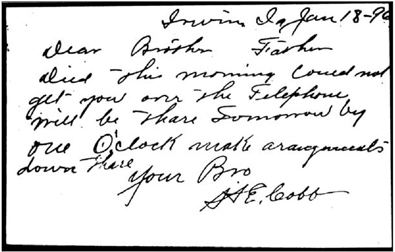
Figure 2-1 Postcard announcing Justus Cobb's death.
4. Matthews, William. American Diaries in Manuscript 1580–1954 . (Athens, Ga.: University of Georgia Press, 1974.) Over 6,000 items of published and unpublished diaries from 350 libraries.
The National Union Catalog of Manuscript Collections (NUCMC) also contains many references to diaries and can be found in print at most large and university libraries. It is a gold mine of information on various unpublished works and where they are available. It is also available online through a subscription service, Archives USA, to which many libraries subscribe.
Tombstones
The next most common substitute for a birth or death record is the date recorded on the tombstone. When you use such dates as corroboration, be sure you indicate that the source is the tombstone. The individual who was buried there probably did not order the tombstone, nor did he supervise the carving.
There is a common sequence for purchasing a tombstone and a number of things can go wrong in the process.
-
The memory of the individual ordering the stone may not be accurate.
-
That individual may not transmit the information accurately.
-
The individual receiving the information from the purchaser may not record it accurately.
-
The individual producing the stone may not accurately carve the information transmitted to him.
-
The stone may not be preserved well enough to allow an accurate reading. Watch out for this problem particularly when you are reading a transcription of the dates rather than looking at the stone itself.
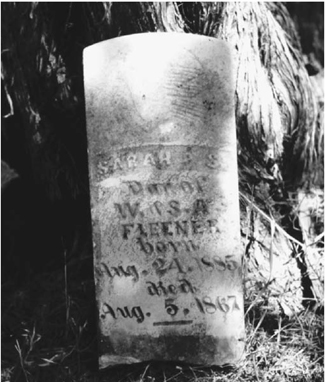
Figure 2-2 Picture of Fleener tombstone.
A tombstone I found clearly reads, “Sarah S. dau. of W. & S.A. Fleener born Aug. 24, 1885, died Aug. 5, 1867” (see Figure 2-2 ).
As it is obvious the stone is wrong, the genealogist must analyze what the dates should be and try to find other records that support or contradict those guesses. Perhaps the birth date is wrong and should be 1865. Perhaps the death date should be 1887. Perhaps the birth and death dates were reversed, and Sarah was born in 1867 and died in 1885. What other records could help us to determine which date is correct? The census is our first stop and here, we luck out. Sarah does not appear on the 1870 census with her parents and there is a space between Lydia, age seven, and William, age two. It fits that the birth year could have been 1865 and Sarah did not live to be in the 1870 census.
Church Records
The records maintained in many churches are another common alternative for both birth and death records. It seems that clergymen were more prone to record baptisms than births, probably to ensure that the newborn babe would be prepared for heaven if premature death should occur. Churches that have particularly good vital registration records include Quaker, Lutheran, Dutch Reformed, Catholic, Episcopalian, and Presbyterian congregations. A tremendous array of religious denominations and sects exist in the United States and their records are usually more difficult to locate here than they may be in European countries, where only one or two denominations are common. The Source: A Guidebook of American Genealogy edited by Loretto Dennis Szucs and Sandra Hargreaves Luebking, rev. ed (Salt Lake City: Ancestry, Inc., 1997) provides some suggestions on where to begin your search for the records of specific denominations. Too often we assume these records don't exist because they have not been published or microfilmed.
It is always worth checking for records at the church, library, and historical society in the community where you believe your ancestor attended church. I have had two unusually good experiences with this approach. I learned from another researcher that a volunteer had transcribed the church minutes from the Rocky Springs Presbyterian Church in Highland County, Ohio, and that they were housed at the Ohio Historical Society. I had the records copied and sent to my home, where I found a record of the baptism of my second great-grandfather and the baptisms of many of those in my family. Even more delightful were the minutes, which told of the “sins” — including horseback riding on Sunday and irregular church attendance — committed by members of my family that were brought before the elders for deposition. To my delight, my third great-grandfather, John R. Strain, had to apologize more than once to the ruling elders.
On the other hand, researching Butler County, Pennsylvania, from my home in Missouri brought nothing but frustration. Finally, on a trip there in the 1980s I visited the courthouse, which allowed me to sort out many of the dilemmas I had encountered. In addition to there being a plethora of people named Hoffman in the area, I found two men named Michael Hoffman born the same year and both married to women named Mary. However, I was most interested in finding the ancestral home and, as the naturalizations had not provided the location, I had just about given up hope. To my surprise, translated versions of the marriage, death, and baptismal records of St. Peter's Reformed Lutheran Church in Zelienople, Pennsylvania, were housed in the town's historical society. There, I found the following entry in the death records for my second great-grandfather:
Casper Hoffman born in Breunings in Gausersan 21 December 1803; married in 1830 to Eva Boehm with whom he had six children; came in 1848 to America; died in Cranberry Township, Butler County 13 October 1872.
What a gift! I photocopied the translations. I also copied the originals of the records, which were kept in the kitchen cabinet of the house behind the reconstructed church. Although the translation of the records was very good, it did contain at least one omission from the originals: the birthplace of my second great-grandfather. Remember that if there is one mistake in transcribed records, it is most likely to be for the ancestor that you are seeking.
As your research moves to the frontier regions of the upper south and middle west, you will encounter the more evangelical churches, such as various sects of Methodists and Baptists. The likelihood of finding vital registration in these churches is slim. These denominations primarily kept membership rolls, and usually the most useful information you can glean from these is a death citation.
When researchers think of church records, they usually think of the minutes or regular records of the church's proceedings and activities. Too often, denominational newspapers are over-looked. Some excellent obituaries were printed in the late nineteenth century, for ordinary church members as well as the more prominent ministers. One of the advantages of religious newspapers is that they cover a wider geographic area than local church registries. Thus, one can trace migration patterns as well as locate vital records in ancestral towns. I don't know how I would have ever found the origins of James Miller if it had not been for an obituary in a published abstract from a newspaper: 4
James Miller died April 25 1852 at his residence at Ebenezer, Greene County in his 77th year. He was born in Shenandoah Co., Virginia and migrated to Clarke County Kentucky. He was a Methodist from early life. He moved from Kentucky to Greene County, Missouri in 1836. Left children and grandchildren.
Another often-neglected source for vital records is religious colleges' alumni records. Figure 2-3 on the next page is an example taken from the alumni bulletin (1903) of Miami College, a Presbyterian school in Miami, Butler County, Ohio.
Newspapers
Newspapers can be a wonderful substitute for vital records even though they are not always completely accurate. Although comprehensive obituaries did not become common until the late nineteenth century, short notices of deaths and marriages were usually included from the beginning of newspaper publication. Whether your ancestor or his family members appear will, of course, depend on their prominence, their proximity to the town where the newspaper was published, and the drama of their demise. In other words, a man dragged to his death by a horse team was more likely to make the paper than a woman who died in childbirth.
From the Vermont Gazette :
23 September 1791: Died in Addison by act of lunacy, Mr. Simon Smith, age 50 years. He left a widow and ten children. His body was found hanging by the neck with his face within ten inches of the ground. Inquest brought verdict of insanity.
29 September 1800: We hear from Orwell that Mr. Jesse Marks, in sailing on Lake Champlain from Mount Independence to Ticonderoga, accidentally fell overboard and was taken up, almost instantly dead. He was in the 36th year of his age.
When you read newspapers, do not limit yourself to the small section reserved for birth and marriage notices or obituaries. Birth and death announcements can appear in other sections as well, especially if the event was unusual in some way — if it occurred in a peculiar place or there were multiple births.
Here are two death notices buried in news stories from The Bolivar Weekly Courier , Bolivar, Missouri.
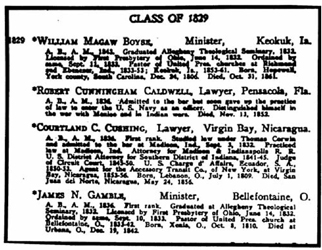
Figure 2-3 Miami College Bulletin, 1903.
10 July 1856: “Last Monday morning Milton Davidson heard a disturbance among the chickens. He was about to fire his rifle, but thinking the report would disturb his wife, he decided to step outside the door, but in doing so, he fell, the gun discharged and the ball entered his wife's head penetrating the skull just above the right eye killing her instantly.”
This news story can certainly be viewed with a jaundiced eye, but it does report the death of Mrs. Davidson. The story, however, was not over. From The Springfield Mirror , Springfield, Missouri:
31 July 1858: “Milton M. Davidson of Polk County, was struck by lightning on the 20th inst. and immediately killed.”
It's possible there is justice in the world. Now consider this birth notice from the Spring River Fountain (Lawrence County, Missouri):
Triplets in Polk County born April 24 [1869] to Mr. and Mrs. Judge James Human of Humansville, two boys and a girl, averaged 6 lbs. He is age 69 and has had 3 wives, is paternal relative of some twenty-five children.
Newspapers also contain letters from citizens who migrated and later wrote back to inform the community of deaths of former citizens.
The Stockton Journal , Stockton, Missouri, 3 May 1888: William P. Conway of Independence, Oregon wrote his father, Dennis Conway, announcing the death of William Tatom, which occurred in Oregon a few days since. He emigrated from Cedar County to Oregon in 1850, accompanied by Thomas Hartley, Mr. Edwards and others. His family followed three years later.
The Springfield Express , Springfield, Missouri, 6 May 1881: Died at Navarro Mills, Texas, April 25th, 1881, Richard H. Younger, formerly of this county. Deceased was brother-in-law of the late Dr. G.P. Shackelford and a nephew of Judge J.T. Morton.
Col. Blodgett, master of several wagon trains west, published a list in 1852 of over a hundred and fifty graves he found along the Oregon Trail from Devil's Gate [Wyoming] to the Missouri River. I submitted this list to the National Genealogical Society Quarterly , where it was published in December 1988, pages 302-04.
Case Study
I had terrible difficulty establishing the death date of Rebecca McConnell Strain, my second great-grandmother. She had applied for and received a military pension for her husband's service in the War of 1812. The last notice in the pension file was a complaint from her son, James Strain, that Rebecca's pension payment was supposed to have been transferred to the pension office in Topeka. In the letter, dated November 1876, he stated that his mother was 86 years old and “a great deal troubled about it.” At that time, James Strain was living in Concordia, Kansas. Searches were made of the cemetery, probate, and death records. No sign of Rebecca Strain.
I began a week-by-week search of the local newspaper, starting with the issues from when I knew she was living in Concordia — November 1876 — hoping a death notice would appear. The first notice in the Concordia Empire was a nice surprise. On 23 February 1877, the newspaper reported that “Mrs. Rebecca Strain has just attained the age of 87 years. She was prostrated by a recent illness but is again able to sit up and handle her knitting needles.” Before finding this, I had only a year for her birth. Surely I was close to finding the death notice. She couldn't have lived a lot longer and was unlikely to be traveling at that age. Wrong!
The following spring the newspaper reported that she had boarded a train and left Concordia: “It is with great regret that we hear of the purposed [sic ] departure of three of our most respectable and respected people: Mrs. Rebecca Strain, mother of Jas. Strain, Esq., Mrs. Margaret Gilmer, mother of Dr. Gilmer, and Miss Franky Gilmer, sister of the Doctor.” Where did she go? And who were these people with her ?
A month later, on 15 June 1877, the newspaper reported, “Mrs. Rebecca Strain, Mrs. Margaret Gilmer and Miss Franky Gilmer, left Concordia for their future home in Illinois…Mrs. Strain and Mrs. Gilmer will reside in Sandoval.” Although hope of finding a death notice dwindled, I kept reading. On 27 September 1878, the Concordia Empire notified its readers, “Died at Sandoval, Ill. Sept. 20, 1878, Mrs. Rebecca Strain, mother of James Strain, Esq. of this place, in the 89th year of her age.”
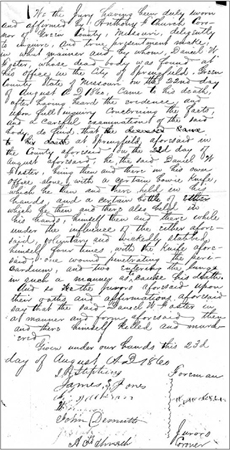
Figure 2-4 Coroner's report on Daniel W. Foster.
Success in finding dates of birth, death, and marriage in newspapers does not require any particular skill. It does, however, require patience and tenacity — two critical traits for a successful genealogist. Searching newspapers also requires innate curiosity and the ability to distill important items from a nongenealogical context. Mrs. Gilmer was not just a traveling companion for Mrs. Strain. She was a previously unidentified daughter.
Court Records
Coroner's reports are issued when an inquest is held to investigate unusual or unknown circumstances surrounding a death. When the inquest is complete, the report includes the causes of death and other valuable information (see Figure 2-4 ). These records are public and difficult to locate; they may be kept in the coroner's office of any court of record, whether city, county, or state.
Elizabeth Barnes was buried in an unmarked grave in Greene County, Missouri. The newspaper states only that she “died within the past weeks.” The application for letters of administration listed her exact death date and her heirs (see Figure 2-5 ).
If the death date cannot be found in the probate record, or if the probate record is missing, other court records may be helpful. In the case of James H. McBride (see Figure 2-6 ), the circuit court minutes of June 1873 gave his date of death as 1863 — ten years previous. In November 1873, the court minutes state that both the widow and a daughter of James McBride had also died (see Figure 2-7 ). Interestingly, James H. McBride did not die in the county where this record was created. He died a hundred miles to the east, but had left property in Greene County that needed disbursement.
Although birth dates in court records are relatively rare, I have found a few in apprentice or guardianship records. Following is an example of the latter, when in January 1807 the names and dates of birth for Joseph Gash Sr.'s children were recorded: “John Gash will be 21 years April 19 1816, Rachel Gash will be 18 years February 19 1815, William Gash will be 21 years old March 11 William Gash will be 21 years old March 11 1820 and Joseph Gash will be 21 years April 14 1822.” 5
In this case, the family's births were registered in the Record of Negroes and Mulattoes, Randolph County, Illinois, Family History Library film 975014.
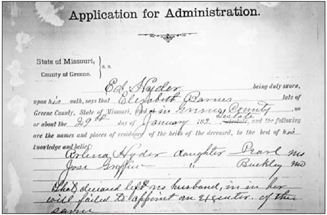
Figure 2-5 Application for administration concerning Elizabeth Barnes estate.
The following list contains the names and ages of the family of Mumford Jones, a colored person, residing near Edin in the County of Randolph and State of Illinois.
|
Mumford Jones |
born 21st March 1792 |
|
Elizabeth Jones |
born 20th December 1810 |
|
Wm. Riley Jones |
born 27th January 1831 |
|
Thomas Warren Jones |
b. 9th June 1833 |
|
Delia Matilda Jones |
born 12th August 1835 |
|
Jasper Newton Jones |
born 31th August 1837 |
|
Marion Houston Jones |
born 25th December 1840 |
|
George Washington Jones |
born 9th January 1842 |
|
Columbus Lafayette Jones |
born 2nd September 1844 |
|
Martha Ann Jones |
born 1st January 1847 |
Depositions in court cases for civil or criminal actions will often begin with the individual identifying himself and giving his age.
Pension Files
In order to qualify for various veteran benefits and pensions, the applicant often gave his own birth date, the date of his marriage, and, for Civil War pensions, a list of births and deaths for each of his children. The later the time period of the benefit, the more vital information you are likely to find. If an individual or his widow was receiving a pension there should be a date for when that person was dropped from the rolls, and often the exact date of death appears (see Figure 2-8 ).
GREENE, COUNTY, MISSOURI
CIRCUIT COURT MINUTES
BOOK M PAGE 285
June 7, 1873
The court further finds that afterwards, to wit, on the first day of November 1863, the said James H. McBride departed this life intestate.
Figure 2-6
Circuit court minutes providing the death date of James H. McBride.
GREENE COUNTY, MISSOURI
CIRCUIT COURT MINUTES
BOOK M PAGE 476–477
November 20 1873
And, the court finds that Mildred A. McBride, the tenant in dower, as well as Allison McBride have both departed this life … leaving the other plaintiffs … entitled to one-sixth.
Figure 2-7
Circuit court minutes providing the death date of James H. McBride's two wives.
If the benefit application doesn't supply the date you need, another source you can check is the Final Payment files, a chronological list of payments made by the government. A card index is available. The microfilm is NARA's T7-18 (23 rolls), entitled “Ledgers of Payments 1818–1871 to U.S. Pensioners Under Acts of 1818 through 1858, From Records of the Office of the Third Auditor of the Treasury.” At the Family History Library, these records are available on rolls 1319381 and 1319403.
Mortality Schedules and Censuses
Don't forget to check the mortality schedules for the years preceding the censuses of 1850, 1860, 1870, and 1880. The census takers were told to report the deaths that occurred in the community within the previous twelve months. Although these lists are not complete, they provide valuable information if your ancestor is named. The mortality schedule was the only record we could find for the death of my husband's aged third great-grandfather (see Figure 2-9 ).
A few states were encouraged to conduct a special state census in 1885 with the promise of partial reimbursement from the federal government. The states that conducted this census are listed in the table that follows.
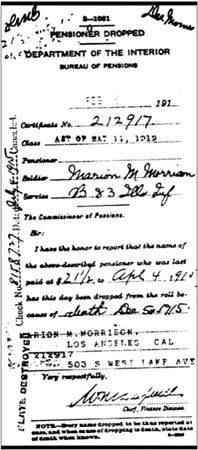
Figure 2-8 Department of the interior record of Marion Morrison's Civil War pension being dropped due to her death.
|
Arizona |
New Mexico |
|
Colorado |
North Dakota |
|
Florida |
South Dakota |
|
Nebraska |
Schedule 5 of this series (see Figure 2-9 ) was a mortality schedule and included name, age, sex, color, place of birth, parents' place of birth, occupation, and cause of death for every person who died within the year ending 31 May 1885. You must know the state and community of your ancestor to determine whether special censuses were conducted there, and if so, what items were listed. For instance, New York did not begin to keep statewide marriage registration until 1880, but the 1865 and 1875 state censuses contain the names and dates of marriages recorded in the previous year.
In Kentucky, school censuses were taken in 1888. Not all have survived, but those that did contain birth dates for the children attending the school. Local variations like this do occur and it is important to watch for them.
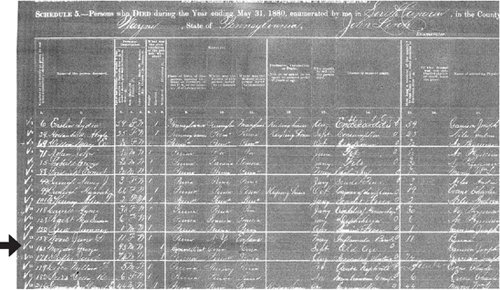
Figure 2-9 Mortality schedule proving the death of George Morgan.
Divorce Records
The exact date of marriage can often be found within the divorce record. Obviously, that there was a divorce is direct evidence that a marriage occurred. Divorce records can be located in county court minutes or in private legislative acts. Table 3-1 of The Source (first edition), pages 86-88, gives the divorce courts for each state and suggestions for locating the records. Divorces, of course, were also reported in newspapers — especially if the spouse had absconded to places unknown, which was typical. The Vermont Gazette (Bennington, Vermont) reported the exact date of marriage in this divorce announcement:
December 21, 1800, Samuel Crafts of Pittsford, Rutland Co., Vermont, petitioned for divorce. He stated that he married Phebe Hill of Pittsford on 8 November 1796 and executed his duties as husband until January 1799, when Phebe was said to be guilty of the crime of adultery and lived in “lewd connections with another person.”
Estimates for Birth, Death, and Marriage Dates
Prior to the mid-nineteenth century, and before that period outside of New England, few exact references to births, deaths, and marriages exist. Instead, the researcher must use inferences, approximations, a process of elimination, and a thorough knowledge of human behavior — as well as an understanding of the legal and social customs of the time period — to arrive at a reasonable estimation of the needed date.
Clues To Help Estimate the Time of Birth
1. Count backward from the time of the first marriage or the birth of the first child to get an approximate age for both parents. A good rule of thumb is eighteen to twenty-three years for a female's first marriage and twenty-three to twenty-eight years for a male's first marriage — allowing a few years for a margin of error. Rural residents and those of lower socioeconomic class tended to marry and begin their families earlier than townsmen and those of higher economic class. Enthusiasm and inadequate birth control almost always produced the first child within two to three years. One must remember that the first child may not survive, and that there is always the possibility of the lusty eight-and-a-half-pound “premature” baby who arrives only four months after the marriage. Wise researchers always keep in mind that they are working with human beings, who had the same interests, faults, proclivities, and needs as human beings do today.
2. The age at which a woman stops having children may also be a clue to when she was born. It is extremely unusual for a woman to have children after the age of forty-five. When a woman has a number of children and then stops for a period, then suddenly another child appears, at least three possibilities must be considered.
a. She is taking care of a grandchild (possibly one of those lusty premature babies mentioned earlier) or a relative's child that she and her husband may have adopted.
b. She has had a menopausal baby. If so, keep alert to see if that child is “void of intelligence,” “defective,” or “dependent.” There is a much higher likelihood of a child being born with Down's syndrome or other birth defects if the mother is over the age of forty. Also, the likelihood of twins increases if the mother is over forty — particularly if there is not a history of twins in the family. If you find one of these situations to be the case, the child is probably biologically hers rather than a relative's.
c. She is a second wife with the same given name as the first wife, and is thus much younger than you think. You may encounter this situation more frequently before 1850, when women are often difficult to locate in the records. A good clue is a significant passage of time in which her name does not appear in the records. Or the opposite may occur. If you are “leapfrogging” across decades and primarily using the census to document your family, ten years is more than enough time for a woman to die in childbirth and a man to remarry and produce additional children. I have speculated that men marry wives of the same name to avoid embarrassing mistakes during moments of intimacy. James M. Beall of Russellville, Logan County, Kentucky, was more cautious than most. He erected a gravestone there in memory of his three wives, all named Sarah.
3. The legal age of consent is important when estimating a date of birth. It is important to know the laws of the community for the period. When could one buy and sell land? Usually individuals couldn't sell land until age twenty-one, although they could acquire it at an earlier age. When did the law allow the witnessing of deeds, the signing of bonds, the witnessing of wills, the choosing of a guardian? In colonial times in Massachusetts, someone as young as fourteen could witness a deed and choose a guardian. In many states and colonies, if a guardian was chosen for the children, they were under fourteen. If the children came into court and chose their own guardian, they were fourteen or over. Sometimes the court minutes reflect a child's dissatisfaction with the manner in which the estate was handled, or he may have wished to exercise the authority of maturing years, so he would ask for a change of guardian as soon as he reached the age of fourteen. If the court minutes are complete, we can also find when the children reached maturity (usually eighteen for girls and twenty-one for boys), as they usually dismissed their guardian and signed a receipt for whatever was left of the estate. A desire to reach maturity and control the money prompted many a dependent child to release and relinquish his guardian very soon after reaching the age of consent.
Following is an example of how estimations can be made for birth years. In this case, I had birth dates for only two of the seven children known to have inherited from their father, Moses Foren. The others were estimated from changes of guardianship and marriage dates and all fit well within the known three marriage dates of Moses Foren.
Moses Foren married (1) Morgan Co., Alabama, 1821, Lucretia Rice.
Moses Foren married (2) Hardeman Co., Tennessee, 27 April 1824, Ceely Ragan.
Moses Foren married (3) Greene County, Missouri, 3 February 1835, Mahala Farmer.
There were seven parts of the estate to be divided among the children. Here I have estimated the birth years for these seven children:
i. Lucretia born 1822/1823, as she was married by 1839, to Theophilus Cobb.
ii. Mary Ann born 1825, as she had reached age fourteen by May 1839, when she chose her guardian.
iii. Martha Jane born 1826, as she had reached age fourteen by November 1840, when she chose her guardian.
iv. Elizabeth born 1828/1829, as she had married in 1846, James Wood.
v. William C. born 20 February 1831 in Hardeman County, Tennessee (from his death record); he had reached age fourteen by September 1845.
vi. Celia born late in 1832, as she had reached age fourteen by January 1847.
vii. Filey Ann born 12 December 1835, as she died 15 March 1857, age twenty-one years, two months, three days.
Beginning with just the ages of the fifth and seventh children and the marriages for two, I could reconstruct the rest of the family from the guardianship papers.
4. When do taxes begin? When do taxes end? Many of the colonies and states required taxation of white males at age eighteen, others at twenty-one. You simply have to know the law of the particular area in which you are working. You can find these laws in the legislative chapters on “Revenue.” For instance, I am currently working in early Missouri. The first revenue act of 18 December 1822 taxed all free white males above age twenty-one. The next, passed in 1825, exempted men over sixty-five, one in 1833 exempted men fifty years and over, and in 1835, the legislature settled on a law that taxed all free white males over twenty-one and under fifty-five years of age. The variations can keep you on your toes, but it can also help make your estimations more accurate — who would pay taxes when they no longer have to?
5. Time and type of migration can be an excellent clue to age. Age is a crucial variable in the analysis of migration trends. When people move, where they move, and how often they move all are influenced by age. A young, single man is the most likely to initiate the exploration of new country, to strike off on adventures, and — since he is also the most likely type to get in trouble with the law — the most likely to find it necessary to become scarce for a while. The established, mature man with a family of half-grown children is more likely to migrate with extended family, or to a location where family members and people from his previous community have already settled. The older person (widowed or with grown children) is likely to move only to where close family members have already established homes.
Probate Records
Probate records can help you estimate the year of birth for an ancestor in several ways. If the testator's (one who leaves a will) brother or brother-inlaw is appointed executor of the estate, the children are probably minors. Usually an older testator will name an adult child or his wife as his executor. A middle-aged woman, often with the help of someone close to her, will retain the responsibility of handling the estate. However, if the wife is very young she may relinquish her right. Whomever she chooses to replace her as executor is probably a relative of hers, and this can give good suggestions regarding her family. If she is quite old, she will probably relinquish her responsibility to administer or execute in favor of a child. Often, you will find this relinquishment in the loose probate papers.
DEFINITIONS
Loose probate papers are the files kept in probate packages that consist of original accounts, receipts, distributions, and other papers not recorded in the probate books.
The contents of the will itself can give you clues to the ages of the individuals involved. How is the wife provided for? Will she live with a son, or have access to a corner of the house and a portion of the garden? The testator may not expect her to remarry because of her age. Or is the testator careful to provide for her only until the time of her remarriage? If he expects her to remarry, he probably wants to make sure her second husband does not have access to his children's money. Does the testator name grandchildren, and do his granddaughters have married names? Doing some arithmetic will help you estimate the age of this testator.
Land Records
Deed books may be the most versatile of all the records we use. You never know what will be recorded in a deed book. Although it is rare to find birth dates within deeds, they can give you a clue to the age and physical health of the grantor. In order to avoid probate court, fathers may begin to sell or give land to their children as they reach maturity and/or marry. An aged man or woman may also sell property to a son or son-in-law in exchange for care during the remainder of his and his wife's lives.
Franklin County, Missouri, Deed Book B:269 6 December 1833, Mary Pepper of Franklin County, for $1 paid by William Pepper of Jefferson County, Missouri, who had obligated himself to maintain Mary during her natural life with good and decent boarding and lodging, and in return she granted 40 acres of land in Franklin County. She further granted him all of her household and kitchen furniture and livestock.
The following unusual deed even provided a specific date of birth, as well as clues to family connections.
Cole County, Missouri, Deed Book B:197: 17 February 1835, John Walker of City of Jefferson certified that James C. Wills, a negro who was 21 years of age on the 12 November 1833, was born in my house while his mother, a freed woman named Nancy, belonged to me. Nancy was set free by the will of Courtney Walker, recorded in Jessamine County, Kentucky. Nancy lived with Walker until she was 25 years of age, at which time she was entitled to her freedom as well as her offspring. James has lived with me from the day of his birth until he came of age and is to be considered a free man since 12 November 1833.
Clues to Aid in Estimating the Time of Death
1. PROBATE. A common method for estimating death is to assume that a death occurred between the time an individual made his will and the time it was proved in court. If he died intestate (without a will), the first letters of administration will be issued by the court within two to three weeks of his death; creditors do not want to wait long after an individual has died to be paid what is owed them, and that process can't begin until the bond has been filed and the letters of administration issued. There are times when the letters of administration may be delayed, perhaps due to the death or relocation of an administrator, or an extension of settlement due to disputes, so you must be alert to those circumstances. A new administrator may have been appointed if complaints were made about the original one by those standing to inherit or by creditors who are not being paid promptly.
Receipts in the probate packet may indirectly give you the date of death. First, find the last date the deceased rendered some type of business.
From Figure 2-10 on page 48, we know John Griffis was alive 5 January 1842. Next, try to locate the receipt for the date the coffin was built (see Figure 2-11 ) or the shroud was purchased (see Figure 2-12 ).
The last doctor's visit can give an excellent idea of when death occurred. In this instance, Dr. Terrell last visited on May 31, the coffin was built in June, and the widow relinquished her right to administer the estate on June 6. When did John Griffis die?
If a probate case remains open for some time but there is no indication of dispute or legal entanglements, the closing of that estate may indicate that the widow has now died. Charles Wildish died in 1898 inWaukeshau, Wisconsin. His estate was settled in 1916. Why? Because his widow died that year. Cornelia Southern of Greene County, Missouri, died in 1898. Her land was not sold until 1909. Why not? Her husband had just died.
2. LARGE GAPS IN THE AGES OF CHILDREN recorded in census records may indicate the death of a child or child-bearing wife. This clue can help you determine possible remarriages.
3. CIRCUIT COURT MINUTES can be an overlooked source for estimating a death date. Figure 2-13 on page 49 is an example of Greene County, Missouri, circuit court minutes reporting a death in a case that had nothing to do with probate proceedings.
4. TAX LISTS are one of the better ways of tracking individuals over discrete time periods. If you are able to follow an individual for several consecutive years and then he suddenly drops off the tax roll, three possibilities arise: he moved away, he reached the age of exemption, or he died. Clues to a death written on the tax rolls are notations such as “Henry Musselman's widow,” “Peter Brubaker's Ex” (meaning executor), or “Christian Hershey's estate,” as were found in Lancaster County, Pennsylvania, records. Kentucky has an excellent set of early nineteenth-century tax lists; the widow may be listed for one or two years after her husband's death, but then she will drop off even though she is still alive.
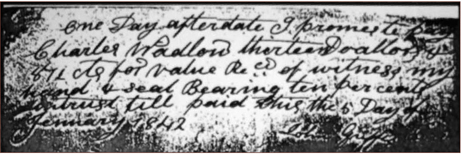
Figure 2-10 Promissory note from John Griffis, 1842.

Figure 2-11 Record of John Griffis' estate.
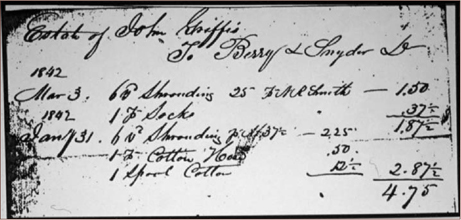
Figure 2-12 Record of John Griffis' estate.
Following is an example of finding a death date using tax records. It also shows the importance of distinguishing individuals of the same name.
The death date of Joshua Cornell of Greenwich, Connecticut, born ca. 1667, was unknown to researchers. He left no probate records, no deeds, no tombstone, and there was no mention of his death in the Quaker records — but I know that he died in 1743. I found the date using tax records.
Greene County [MO] Circuit Court Minutes
April Term 1839
DRUERY MERRITT vs. BENJAMIN KIMBERLING
Now at this day appearing to the satisfaction of the Court that the said Druery Merritt is deceased and it is considered by the Court that said suit be dismissed.
Figure 2-13 Circuit court minutes proving the death of Druery Merritt.
Both Joshua Cornell Sr. and Joshua Cornell Jr. were taxed a number of years in a row, including:
|
1742 |
AMOUNT AS GIVEN |
|
Joshua Cornell |
Sr. 53-8 |
|
Joshua Cornell Jr. |
124-00 |
The following year only Joshua Cornell was listed, with nothing indicating that there was more than one man of that name in the neighborhood who paid taxes.
|
1743 |
|
|
Joshua Cornell |
174-17-6 |
Notice that he is no longer using a junior or senior designation, and look at the amount — it is almost the combination of the earlier year's taxes for both men. Doubters may suggest that the younger man died, not the elder. Examining a few more documents in the area such as deeds, church records, or court minutes conclusively proves that the younger man was the one later creating or named in records.
5. MIGRATION CAN OCCUR IN THE ELDER YEARS. If you are having difficulty establishing the death date of an older person who lived in one community for several years and then disappeared, most likely he or she migrated and then died in the home of a child — usually a daughter.
6. A CHANGE OF NAME MAY INDICATE A DEATH. If “Peggy,” who was named after her grandmother, suddenly becomes known as “Margaret,” this may indicate the death of the older woman for whom the child was named. “Polly” may become Mary, “Betty” may become Elizabeth, and so on. Watch for the changing of a title from junior to senior. As you may know, before the twentieth century, junior did not necessarily indicate that a man was the son of the man with the same name who used senior. It demonstrated only that there was an older man of the same name living in the community. See chapter eight, “Sorting Individuals of the Same Name,” for a more extensive discussion.
7. Watch for legal transactions of the off spring. The division of lands previously held is an indication of death, and if the lands are sold and the heirs leave the community, both parents are likely to be deceased. Land sold “in the interest of Samuel Connelly, a minor” may be a clue to the death of a parent. Note the absence of one-third of the land of the deceased; it may be held for the widow during her lifetime, and then dispersed at her death. When the land is divided into parts and all the children are accounted for, the wife of the deceased man has predeceased him.
Clues to the Occurrence of a Marriage
1. Probate records should be checked carefully. Note wills in which the husband (or anyone with his surname) is named as a “legatee,” and look for probate in the county of the husband's or wife's residence at the approximate time of marriage.
It was common during the eighteenth century for the witnesses of a will to be one person from the wife's side of the family and one from the husband's. This is not a hard-and-fast rule, but one certainly worth investigating. Often guardians appointed for the children will be a member of her family as well as one of his. Guardians are almost always family members. If you had dependent children, wouldn't you most likely choose a family member to look after any estate your children might inherit? The only exception I have noticed to this rule also gives a clue to marriage: the widow's new husband, the children's stepfather, becomes the guardian.
2. Look for deeds in which the husband was the grantee of a land parcel of unknown origin. Perhaps his wife brought the land to the marriage. Before you jump to this conclusion, however, be sure to check the many ways people may acquire land other than in fee simple. Check delinquent tax sales, civil suits, entitlement (such as military bounty land), federal land sales, and other nontraditional methods for acquiring land that have nothing to do with inheritance. Look for situations in which the husband was a co-owner with others who were not his brothers and sisters or their spouses. This may indicate lands held in common with his wife's siblings.
3. Quitclaims executed by a husband who may be acting in his wife's place.
Franklin County, Missouri, Deed Book D:334: On May 4, 1841, Andrew Caldwell and wife, Nancy, sold and quitclaimed to William Bell, all right, title and interest in their undivided share of the estate of Leonard Fairer, deceased.
4. Watch for the sudden prosperity of a male ancestor that you can't account for. This may indicate inheritance from the bride's side of the family.
5. Any deeds involving a woman are worth investigating. She may be selling property she inherited from her father or husband; quitclaiming for the same reason; selling land with a son or brother; or selling lands to a child.
6. Unusual names that may be surnames can often be clues worth searching. Pressly Glenn, Holloway Cobb, Avery Morgan, and Bailey Bond were all named for the mother's side of the family.
7. Marriage contracts, often found in deed books, trust deeds, intestate land divisions, deeds of gift, equity and probate court records, quitclaims, and property settlements in divorce cases are all possible sources for marriage records and identification of a spouse. The following deed of gift does not name the husband, although most gifts to married women do. This one is especially nice, as it also names three grandchildren. As the deed was recorded in Missouri, we can assume the daughter was living there.
DEFINITIONS
Fee simple is property granted without limitation or condition — sold or given to a man or woman and his or her heirs absolutely, without any end or limit.
Boone County, Missouri, Deed book A:67: 26 November 1821, Benjamin Lawless of Kentucky, for the natural love and affection he had for grandchildren Minerva Riggins, William Riggins and Thomas Riggins, the children of daughter Bargellia Riggins, he gave negro girl, Nelly, age 14 years.
The following trust deed provides the residence of the father and the Tennessee residence of his daughter, her husband, and her later residence in Missouri. It can be assumed that Isaac Fulkerson was then in Virginia with his probable grandfather, Reuben Bradley, but that he either lived in Missouri or was planning to move there. Reuben's daughter, Sarah Fulkerson, and her husband Frederick were planning to move to Missouri, probably to join their son and perhaps other relatives.
Lafayette County, Missouri, Deed Book C:341: 23 July 1829, Reuben Bradley of Washington County, Virginia, sold to Isaac Fulkerson, James Sharp and Jacob Sharp of Lafayette County, Missouri, and Nathaniel Dryden of Washington County, Virginia, who is about to remove to the state of Missouri; that whereas Sarah, the daughter of Reuben, married Frederick Fulkerson several years ago and now resides in Rhea County, Tennessee and contemplates moving to Missouri in September next, and said Bradley being advanced in life and desirous to make some suitable provision for his married daughters and out of control of their husbands, with love and affection for daughter Sarah and children born to her or hereafter, conveyed to Isaac Fulkerson and Jas. Sharp in trust two negro slaves: a man about twenty-five purchased by Bradley, and a negro girl aged about nine years named Jane which Bradley intends to send to his daughter by her son for the purposes mentioned herein. Sarah may use the slave for her own use during her natural life, but without any power to sell or dispose of slaves and at her death go to her children. Filed for record in Lafayette County, Missouri 31 July 1832.
8. Cemeteries can provide inferences of marriage from inscriptions, family groupings, and even types of tombstones. A young woman (age twenty-two to twenty-eight) in a family burial plot who has a different surname from the others buried there was probably a daughter who married, died young (perhaps in childbirth), and whose husband then remarried. Look for adjoining stones with different names, but of the same shape, type of stone, and style of carving (see Figure 2-14 ).
These tombstones were probably purchased, carved, and set at the same time, most likely when Lonnie died. We can assume that Virginia was first married to William F. Huffman, but by 1897 she was married to H.S. Miller.
A “stranger” in the family plot may actually be a relative who can provide clues to a woman's maiden name. Two children lie in the Strain family plot in a Monmouth, Warren County, Illinois, cemetery. Nathan Brown, a man of eighty years, was also buried in that plot. He died over twenty years after the Strain family had left Warren County. I had assumed James Strain had sold part of the plot to a stranger who needed a burial place. Wrong! Nathan Brown was Nancy Strain's younger brother.
Sometimes no stones exist, but there may be a record of purchases of plots. Knowing that an ancestor purchased a plot where someone whose name you do not recognize is buried may indicate the burial of an in-law or other relative. I found the unmarked graves of my great-grandparents in Prosser, Washington, because their infant grandson, who would have been my great-uncle, was in the same plot. His gravestone led me to the records that indicated who had purchased the cemetery plots.
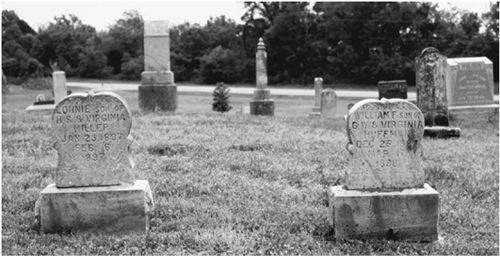
Figure 2-14 William F. son of G.W. & Virginia Huffman b. Dec. 25 1887 d. Mar. 17 1888. Lonnie son of H.S. & Virginia Miller b. Jan. 25 1897 d. Feb. 6 1897.
Clues to the date of a marriage are:
a. the birth of the first child.
b. the sale of a parcel of land from a father to his son or son-in-law, especially if the sale was for a small amount of money, such as $50 (know the going rate for land in the area at the time to verify this).
c. the acquisition of a small parcel of land by a young man — he has either just married or is likely to be intending to.
d. movement on the Pennsylvania tax list from freeman (or inmate) to regular poll tax for a white male
9. Correlating two dates, one in which the woman was single and one closely following in which she was married. As an example, I learned from a deed dated 14 November 1700 that Hannah, the wife of William Sumner of Middletown, Connecticut, was the daughter of Daniel Henchman of Boston. But by 1700, Hannah had been married a long time — her first child was born 22 November 1679. Could I come closer to estimating the time of marriage? Deeds again provided the answer. On 15 August 1678, along with her brother Hezekiah Henchman, Hannah witnessed a deed as Hannah Henchman, and on 4 April 1679, she was a witness to her grandmother Elizabeth Clement's deed of gift as Hannah Sumner. So Hannah Henchman was married to William Sumner between August 1678 and April 1679. In fact, unless Hannah and William jumped the gun by necessity, they were married between August 1678 and February 1679, as her first son was born in November.
Locating births, deaths, and marriages when no vital records are available requires studying a multitude of records. It demands the correlation of data rather than finding that one record of absolute proof. It means the researcher makes a logical and chronological study of the records to bring together the myriad events that re-create an individual's life — one begun by birth, connected by marriage, and ended by death.
1 Donald Lines Jacobus, “Retroactive Dates and Places,” The American Genealogist 34 (January 1967): 31–35.
2 M. Halsey Thomas, ed., The Diary of Samuel Sewall 1674–1729 2 vols., (New York: Farrar, Straus and Giroux, 1973), I:80.
3 Francis G. Walett, The Diary of Ebenezer Parkman 1703–1782 (Worcester: American Antiquarian Society, 1974), 128.
4 “Some Obituaries and Death Notices,” abstracted from the St. Louis Christian Advocate of the Methodist Episcopal Church, South, various volumes of Missouri Pioneers compiled and published by Nadine Hodges and Mrs. Howard W. Woodruff.
5 “Buncombe County, North Carolina, Special Court Proceedings, 1798–1812,” 326. FHL film 410980.